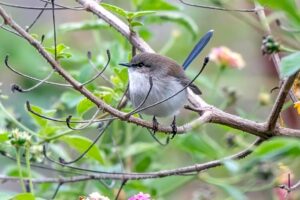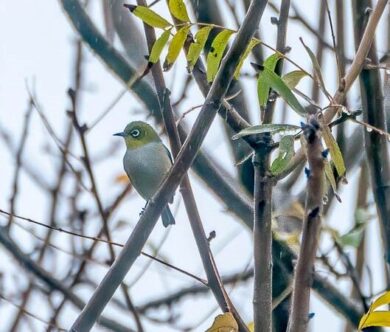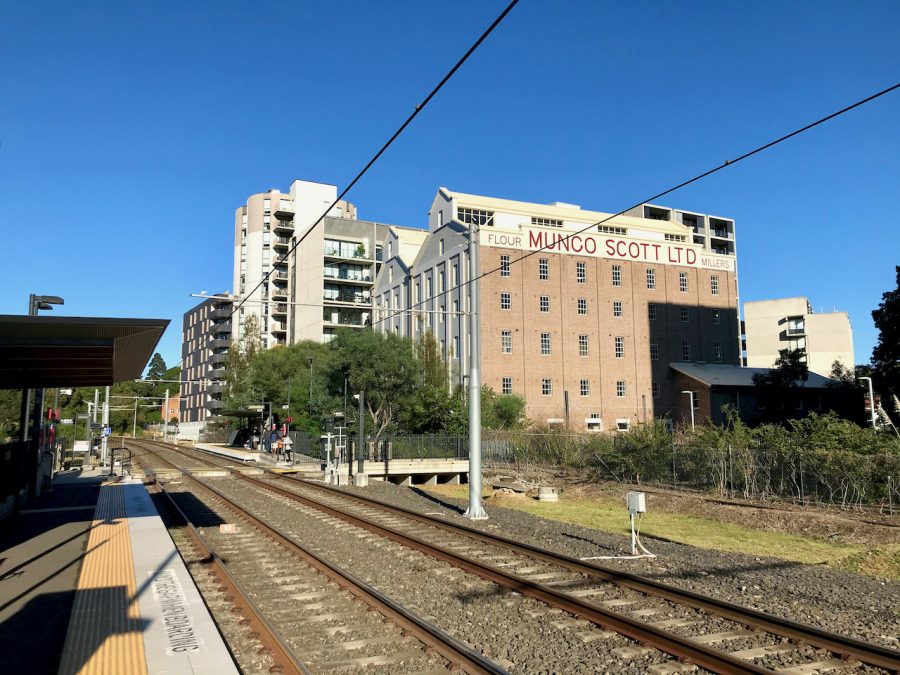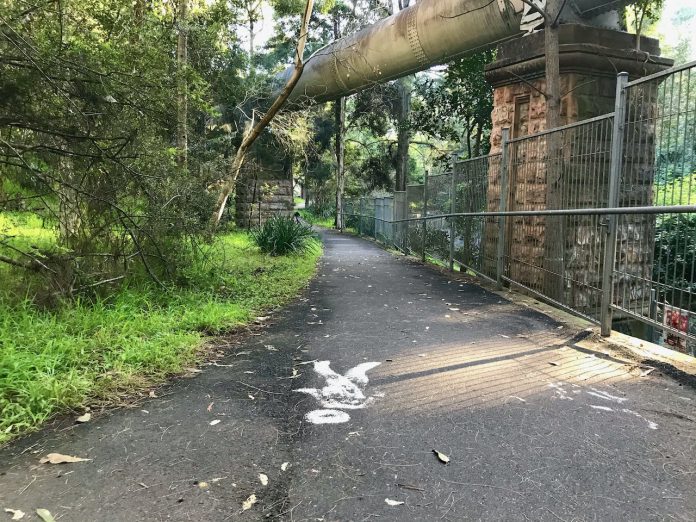As more people flock to Sydney’s inner west, and the pressure for space builds, a group of dedicated locals have been working hard to improve the area’s biodiversity.
Could it be a goshawk? By the time I figure out the focus wheel on my borrowed binoculars, the bird is gone. “There he is again,” I’m told, as I try to lock on to a rustling of small branches, struggling to navigate the eyepieces around my glasses.
On a mid-week Autumn morning, roughly half a dozen people are gathered at the northern end of a light rail station in the inner Sydney suburb of Lewisham. They too are scanning the gums that tower over the platform, although these citizen scientists, all members of the GreenWay Birdos, are having much more success with their spotting.

Linking two of Sydney’s major waterways, the Cooks to Cove GreenWay is an environmentally important corridor of open spaces, spanning across seven suburbs in the high-density inner west. Built with both civic and community input, much of the 5.8km stretch of walking tracks, cycleways and native vegetation utilises formerly industrial sites along the Dulwich Hill light rail line.
With state and local government funding now secured to complete the path’s missing links, the GreenWay is in the midst of a flurry of construction, with a spokesperson for the Inner West Council saying they were focussed on delivering the project’s high priority works by 2023.
The GreenWay Birdos are one of the many community-run groups making use of the urban greening project. Amongst the surprising quiet of the GreenWay’s leafy canopy, the careful acts of listening and watching offer a reprieve from the otherwise consuming thoughts of everyday life, but the Birdos also conduct important research.
Founder Jo Blackman has been co-running the bi-monthly survey of the corridor’s birdlife since 2016. With an iPad in hand, the local of more than 30 years diligently logs the information of all the birds they spot, to be uploaded to a national biodiversity database. “Three starlings, Jo,” a fellow twitcher rushes to inform her. “Three starlings, great,” she quietly notes under her tightly fastened sunhat.

As backyard gardens have made way for granny flats and home extensions, there’s been little room around here left for birds, although as a member of the Inner West Environment Group (IWEG), Blackman has been working to change that. Formed around the turn of the millennium, IWEG, a volunteer organisation of which the Birdos are an offshoot, helped establish many of the GreenWay’s dedicated native vegetation sites, which have drawn some wildlife back to the area. Smaller birds, bullied out of the neighbouring parks, have found particular shelter in the low-lying scrub that flanks much of the path.
On their previous survey, Blackman and the Birdos led me on a detour through one of IWEG’s more secluded bush care spots, as they went in search of fairy wrens and silvereyes. Sandwiched between the rail track and a few backyard fences, the plot, now managed by council, is one of a handful that were spared when this section of the historic freight line that ran from Dulwich Hill toward Darling Harbour was upgraded to service the light rail a decade ago.
Locked behind a chain-link fence on a dead-end street, I could have walked past this spot a hundred times and thought it was nothing but an overgrown discard from the area’s industrial past, certainly not a reclaimed wonder of considerately planted natives.
“I’d be happy if they built it and I’m still alive,” a voice over the phone says with a slight but friendly chuckle. A few days after my jaunt with the Birdos, I’m speaking with Bruce Ashley, another long-time local who first proposed the idea of transforming the old goods line into a continuous active transport and biodiversity corridor in the late 1990s.
After two decades of grants and funding from all levels of government, Ashley says the completion of the GreenWay has been slower than anticipated. “It takes a while to build up support, but it could have been built when they built the light rail.” He admits, though, that council and state involvement has certainly helped legitimise the concept.

Projects like the GreenWay are important in this part of the Harbour City, where green spaces are rare. Data from the Office of Local Government indicates that the Inner West Council area contains just 13 square metres of accessible public open space per resident, the second lowest amount in Greater Sydney, and well below the city-wide average of 75 square metres.
With space at a premium, it’s hard to make room for everyone, and the area’s increasing development only adds to the pressure. Ashley highlights the converted Waratah Mills apartments as one example, where, in 2018, residents vetoed a plan to allow an exit from the GreenWay’s bike path to travel through their carpark. The proposed reroute now requires a costly tunnel to be built under an adjoining street. Regardless of the course the exit takes, though, it will disrupt 150 metres of established native vegetation.
When contacted for comment, an Inner West Council spokesperson said, “while construction of the GreenWay will impact on two existing bush care sites, the project will result [in] overall net increase of bush care areas and public open space.”
Although largely happy with how the project has been realised, Ashley doesn’t want the work of community volunteers to be overlooked in situations like these. “Bush care is the last cab off the rank,” he said. “At the top are the wealthy landowners who whinge and complain.” Publicly available council documents indicate construction on the tunnel is due to begin next year.

Birdo and IWEG stalwart Geoff Wicks remembers when all you would see along the rail corridor were feral pigeons and sunflowers, both a result of the seed the goods line would carry for the nearby Mungo Scott Flour Mill, before it too was converted into a mini-city of hip apartments. Wick’s garden is the final stop for the day’s tour of the GreenWay, although it doesn’t technically belong to him.
Originally from the Northern Rivers region of NSW, Wicks has spent much of the last three decades transforming the abandoned dunny lane that runs between his back fence and the rail track into an urban bush oasis. “There wasn’t a tree in here, just rubbish,” Wicks tells me, as we tour his tennis court-sized forest.
An undergrowth of native grasses carpets 20 tonnes of cheaply-sourced dirt – surplus from the installation of backyard swimming pools. Stately eucalypts rise two or three storeys high. It’s hard to believe this guerrilla garden hasn’t always been here. If you dig a foot down, you’ll still find the road bed.
Like the previous IWEG site, Wicks’ garden is now maintained by the Inner West Council, which means he and his wife are no longer permitted to perform some of the necessary upkeep they once would have done. He’s spent months asking council to organise a contractor to reinstall a fallen microbat box, among other things. Volunteers that helped with planting and weeding haven’t returned since the pandemic began.
“Yeah. Sure,” Wicks laughs, when I ask if he ever sought permission to build his garden in the first place. “Some things you just got to do.” As impressive as it is, this garden isn’t quite dense enough to attract small birds just yet.


